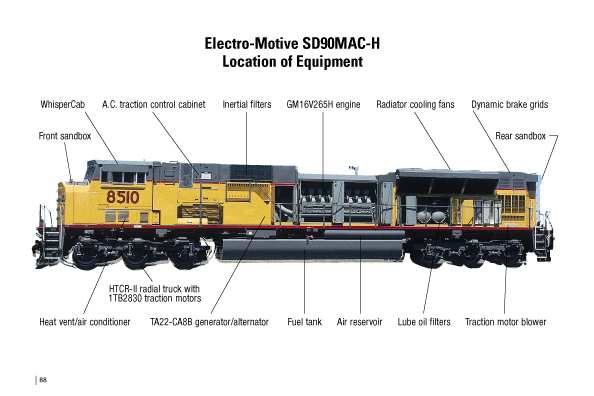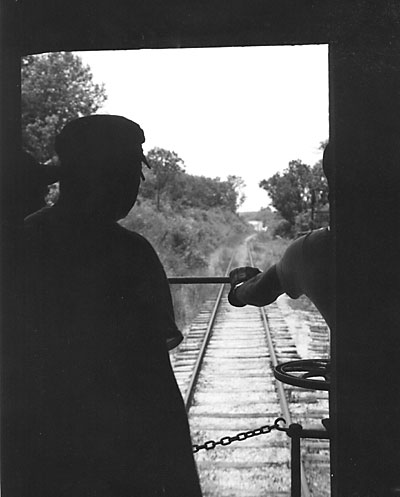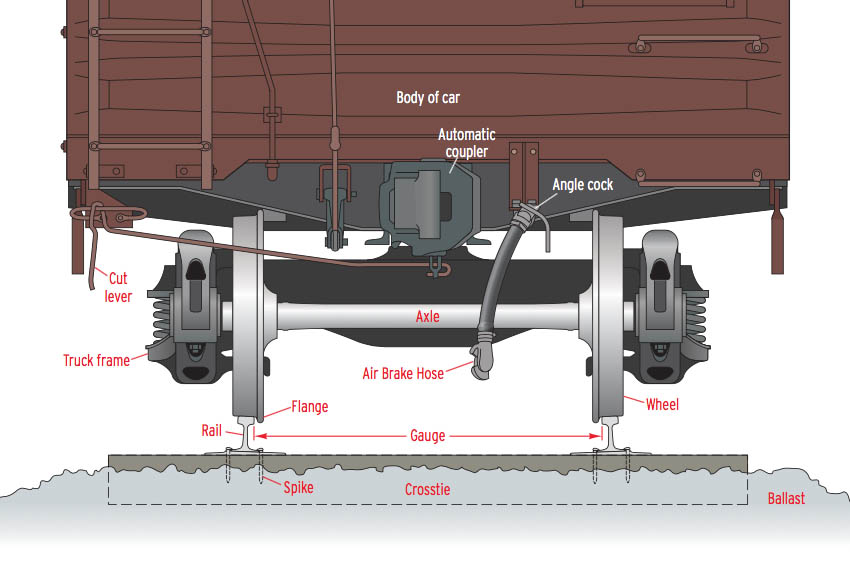It was December 2005 when I wrote the rough draft of my story on using GPS (Global Positioning Satellite) to help when chasing trains in unfamiliar lands. Between that time and the time the article appeared in the July 2006 issue of Trains, I kept an eye on the advertisements from national electronic retailers (Best […]
Magazine: Trains Magazine
Model Railroader, May 2006
[…]
Trains, May 2006
[…]
A look inside Kalmbach’s Field Guide to Modern Diesel Locomotives

Sample page from Field Guide to Modern Diesel Locomotives. Sample page from Field Guide to Modern Diesel Locomotives. Greg McDonnell’s Field Guide to Modern Diesel Locomotives, from the publishers of TRAINS Magazine, picks up where Louis Marre’s Diesel Locomotives: The First 50 Years (Kalmbach 1995) leaves off. McDonnell includes histories and spotting features of Electro-Motive […]
NORAC: Northeast Operating Rules Advisory Committee
Modern railroad dispatching systems and movement controls have evolved by trial and error into a two-tier system of centralized dispatching and trackside signaling. But while the physical means of controlling traffic converged on a few types of lineside signal equipment – semaphores, position-lights, searchlights, etc. – the colors and arrangements (“aspects”) they presented, and the […]
A railroading staple: The caboose

Caboose For more than a century, the caboose was a fixture at the end of every freight train in America. Like the red schoolhouse and the red barn, the red caboose became an American icon. Along with its vanished cousin the steam locomotive, the caboose evokes memories of the golden age of railroading. There are […]
Booster units
Say you’re an engineer running a multi-unit diesel consist on a freight train. During the trip, it becomes necessary to remove the lead unit because of a grade-crossing entanglement, some mechanical problem, or to give to another (underpowered) train. No problem – the second unit can lead as well as the first, so you resume […]
CTC: Remotely directing the movement of trains
Who controls the movement of the trains after the tower is closed? The train dispatcher is the most common heir to the towerman’s duties, but not always. The type of control used depends on the nature and density of the rail traffic handled at the location. Ways to preventing trains from colliding when railroad lines […]
Defect detectors
An Amtrak train en route from Milwaukee to Chicago on Canadian Pacific’s double-track main line hurtles by a metal cabin and some trackside apparatus. Over the radio, a stilted voice intones “CP detector, milepost five seven point six. Main track: two. Total axles: one six. No defects. Temperature: five three degrees. Detector out.” A moment […]
Freight car classifications
The Association of American Railroads has 11 basic classification of freight cars. Most of the major classes have subclasses, and you’ll find them by clicking on the links below. The following was taken from the July 2002 Official Railway Equipment Register, published by Commonwealth Business Media. The National Model Railroad Association also offers reprints of […]
Freight car markings
Conrail. Milwaukee Road. Santa Fe. Rail Box. Anyone who watches freight trains is familiar with these and other names blazoned across the sides of freight cars. But that’s just advertising, which some companies omit for economy’s sake. And if a car changes hands, its new owner may not even bother to paint out the old […]
Freight car trucks and carbodies

Car trucks and carbodies Do you remember running boards and full-height ladders on box cars? They are known in the railway supply trade as freight-car components, and while running boards and full-height ladders have followed the telegraph key and the steam locomotive into railroad technological history, other components remain as key elements of the freight […]
